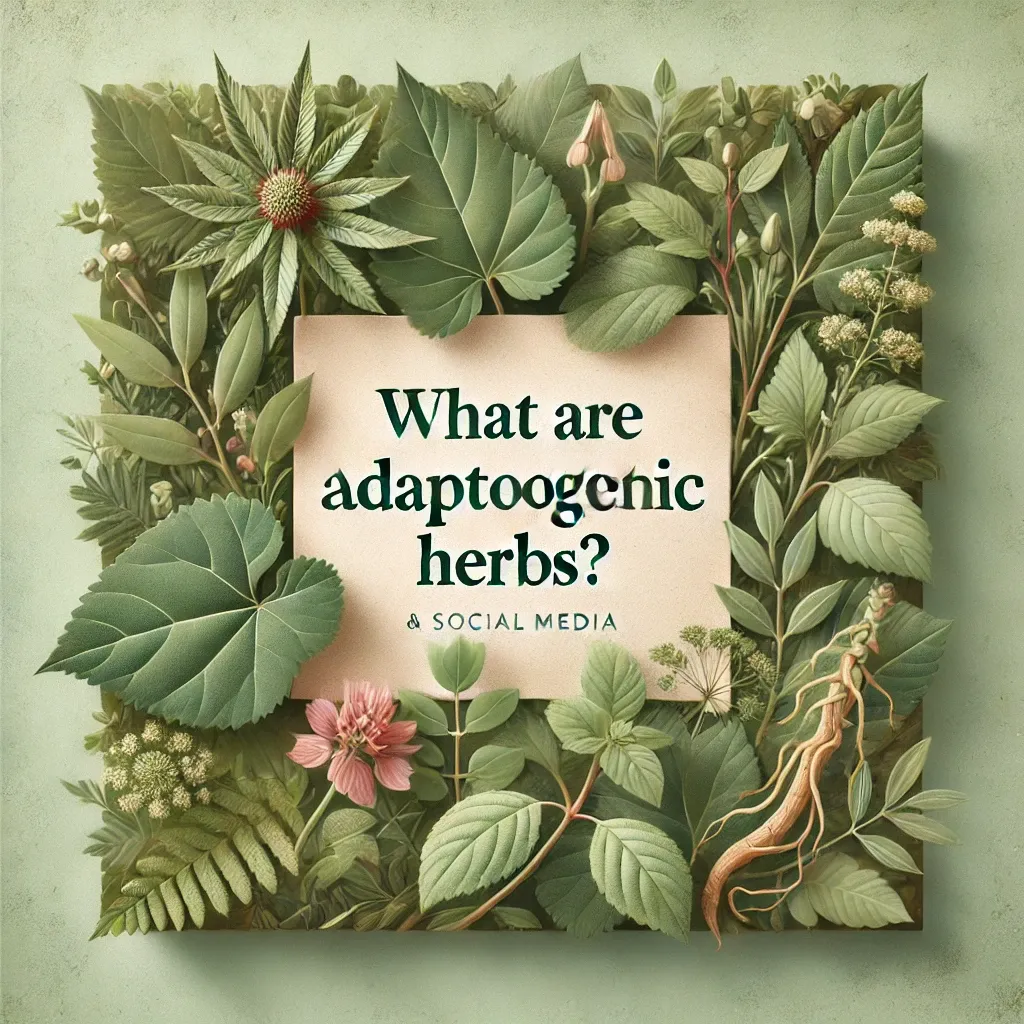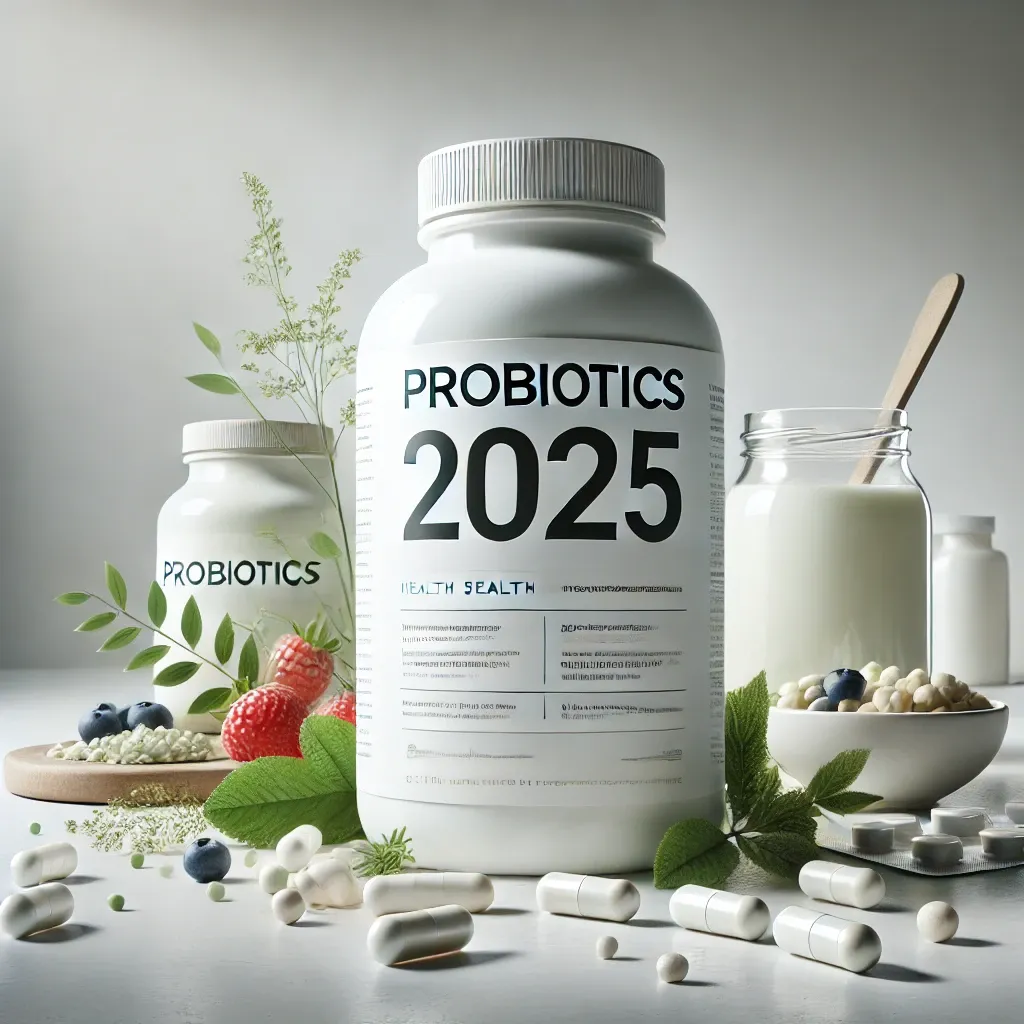📋 Table of Contents
Adaptogenic herbs are special plants that help our bodies better adapt to stress. The term “adaptogen” itself comes from the word “adapt.” These herbs support homeostasis—restoring balance in the body—which is why they are receiving so much attention from modern people who are constantly tired and busy.
In fact, adaptogenic herbs are not a new concept. They have been used for thousands of years in traditional Indian Ayurveda, Chinese medicine, and Russian folk remedies. These herbs do more than simply boost immunity or relieve fatigue—they help balance the entire body. That’s why they’re familiar to those deeply involved in herbal medicine.
🌱 Definition and History of Adaptogenic Herbs
Adaptogenic herbs are natural plant substances that help the body cope more effectively with stress. The term “adaptogen” was first used in 1947 by Soviet pharmacologist Nikolai Lazarev, who was looking for substances that could increase the body’s resistance to stress and found notable effects in certain plants.
The concept of adaptogens goes beyond a simple herbal effect. These herbs work in a “non-specific” way to help the body respond to and recover from physical, biochemical, and emotional stress. For example, some adaptogenic herbs can calm the body when it’s overstimulated and energize it when it’s sluggish.
Historically, adaptogenic herbs have been used for centuries in Indian Ayurveda and traditional Chinese medicine. Ashwagandha in India and ginseng and astragalus in China are representative examples. These herbs were not merely supplements but were used to enhance vitality and prevent illness.
Especially during the Cold War, the Soviet Union used adaptogenic herbs for soldiers, astronauts, and athletes. This was to help them maintain peak condition under extreme physical exertion and mental stress. At the time, Russia conducted extensive research on Siberian ginseng (Eleutherococcus) and applied it in practice.
Thanks to this historical background, adaptogenic herbs are still recognized today as a branch of natural healing that blends both tradition and science—not just a passing trend. Personally, I think herbs that have stood the test of time like this prove their reliability and value on their own.
In today’s wellness industry, adaptogens are viewed as a symbol of a “naturally healing lifestyle,” alongside meditation, yoga, and nutritional therapy. They are especially popular among people dealing with anxiety, sleep problems, and chronic fatigue.
The impact of adaptogenic herbs on health is being actively studied worldwide, and their definitions are becoming increasingly specific. The WHO has also taken an interest in adaptogens, and some herbs have even been classified as subjects of medical research. In this way, adaptogenic herbs continue to evolve at the intersection of tradition and science.
These herbs are more than just stress reducers—they help restore the body’s regulatory mechanisms. Their ability to balance the body will likely gain even more attention in the wellness market. Adaptogens serve as “balancers” for health and are becoming essential tools for modern life.
In this era when it’s easy to feel mentally and physically drained, adaptogenic herbs quietly support us like invisible allies. These small plants that naturally help manage everyday issues like insomnia, fatigue, and frequent colds are truly special.
🧾 Comparison Table: Definition of Adaptogens
| Category | Description |
|---|---|
| Definition | Natural substances that increase the body’s resistance to stress |
| Origin | Term first introduced by Soviet pharmacologists in the 1940s |
| Fields of Use | Medicine, alternative medicine, health supplements, sports |
| Representative Herbs | Ginseng, Ashwagandha, Rhodiola, etc. |
| Characteristics | Biphasic regulation, homeostasis restoration |
This table helps clarify the definition and characteristics of adaptogens. Rather than focusing on scientific terms, it’s helpful to understand how they work in our daily lives for better practical use.
💪 Main Benefits of Adaptogenic Herbs
Adaptogenic herbs do more than just reduce stress—they help restore the body’s overall balance. When we’re under stress, the hormone cortisol is often overproduced. Adaptogens help regulate this hormone, which in turn reduces fatigue and improves concentration.
The second key benefit is immune support. Some adaptogens enhance white blood cell activity and regulate immune responses. This can help prevent colds or viral infections and shorten recovery times, especially during seasonal changes or periods of fatigue.
A third notable benefit is anti-inflammatory action. Adaptogens help suppress inflammation and reduce cellular damage. For example, ashwagandha and rhodiola have been reported to lower oxidative stress and help alleviate inflammatory responses, which can positively impact chronic disease management.
They also significantly benefit mental health. Many studies have shown that adaptogens are effective in alleviating symptoms of depression, anxiety, and insomnia. This is due to their ability to balance neurotransmitters. For instance, herbs like rhodiola and bacopa may help with stress-induced insomnia.
Their energy-boosting effect is also noteworthy. Unlike caffeine or energy drinks that artificially stimulate, adaptogens draw out the body’s natural energy and reduce fatigue. Taking adaptogens before exercise can increase stamina and speed up recovery—this is why Russian athletes favored Eleutherococcus.
They also help regulate hormonal balance. Adaptogenic herbs like maca and ginger are widely used in women’s health to ease premenstrual symptoms such as mood swings, fatigue, and skin issues. Some studies also suggest they may relieve menopausal symptoms in middle-aged women.
They may positively influence blood sugar and cholesterol levels as well. Some adaptogens help stabilize blood sugar and lower bad cholesterol. This makes them a useful health habit when combined with a proper diet, especially for those concerned about diabetes or cardiovascular disease.
They are also known to support liver detoxification. Herbs like milk thistle protect liver cells and promote detoxification. For those whose liver is stressed due to alcohol or pollution, these herbs can help restore liver function.
Adaptogens can also enhance memory and cognitive function. Bacopa and rhodiola, in particular, have shown benefits in improving learning ability and concentration. They can be helpful when preparing for exams or working on mentally demanding tasks.
As you can see, adaptogenic herbs go beyond simple health supplements—they support holistic recovery of both body and mind. If stress is the root of all illness, then adaptogens are nature’s quiet solution to that root cause.
🌿 Summary Table of Adaptogen Benefits
| Benefit | Description |
|---|---|
| Stress Regulation | Promotes recovery by balancing cortisol levels |
| Immune Support | Enhances white blood cell function and resistance to infections |
| Anti-Inflammatory & Antioxidant | Reduces inflammation and protects cells from damage |
| Mental Health | Relieves anxiety, depression, and insomnia |
| Energy & Stamina | Provides steady energy, reduces fatigue |
As this table shows, adaptogens have wide-ranging benefits across various areas of health. Choosing herbs based on your symptoms or health goals is a great way to get the most out of them.
🌿 Common Types of Adaptogenic Herbs
There are many different types of adaptogenic herbs. Each herb has its own unique properties and benefits, so choosing the right one for your needs can enhance its effectiveness. In this section, we’ll introduce the most widely used adaptogenic herbs around the world.
The first is “Ashwagandha (Withania somnifera),” a herb long used in Indian Ayurvedic medicine. It is excellent for relieving stress and improving sleep. It is especially effective in calming anxiety and is also known to boost testosterone levels in men.
The second is “Rhodiola rosea,” a plant native to northern Europe and Siberia. It is outstanding for increasing physical endurance and reducing mental fatigue. It also helps improve focus and learning ability, making it popular among students and professionals.
The third is “Siberian ginseng (Eleutherococcus senticosus),” known in Russia for its powerful fatigue-reducing effects. It was even used by soldiers and astronauts. It is also effective in boosting immunity and physical strength.
Other notable adaptogens include “Maca,” “Bacopa monnieri,” “Ginger,” “Milk Thistle,” and “Holy Basil.” Maca is known for enhancing energy and sexual function, Bacopa for improving memory, and Milk Thistle for supporting liver detox. Each herb has a clear purpose, so it’s best to choose one that suits your health condition.
These herbs come in various forms—tea, powder, capsules, and more. Regular daily intake helps restore balance in the body. Because adaptogens work holistically, long-term use is more effective than short-term fixes.
Adaptogenic herbs are great on their own, but combining them can create synergistic effects. For example, taking ashwagandha and rhodiola together can help reduce stress and improve focus at the same time. These kinds of combinations are often used by modern health supplement brands.
When choosing an adaptogen, it’s important to clearly identify your needs. For example, choose ashwagandha for sleep issues, maca for low energy, and eleutherococcus for immune support. Strategically using herbs based on your goals is key to effective health management.
These powerful gifts from nature often have few side effects and are safe for long-term use, unlike synthetic drugs. However, they can still affect individuals differently, so it’s best to start with small doses when trying a new herb.
For people constantly under mental and physical stress, adaptogenic herbs can be incredibly helpful. They restore balance and boost vitality naturally, making it easy to build a healthy routine by incorporating them into daily life.
📋 Comparison Table of Key Adaptogenic Herbs
| Herb Name | Main Benefits | Origin | Form of Intake |
|---|---|---|---|
| Ashwagandha | Stress relief, improved sleep | India | Tea, capsules, powder |
| Rhodiola | Enhanced focus, reduced mental fatigue | Siberia | Tea, liquid, tablets |
| Maca | Energy boost, sexual function | Peru | Powder, capsules |
| Eleutherococcus | Immune support, energy recovery | Russia | Tea, tablets |
| Bacopa | Memory and brain function enhancement | India | Tea, liquid |
With this table, you can compare the characteristics and benefits of each adaptogenic herb and choose the one that best fits your needs. You can also mix and match based on your daily condition or health goals.
☕ How to Take Them and Precautions
To use adaptogenic herbs effectively, it’s important to know the proper intake methods and timing. No matter how beneficial a herb may be, taking it at the wrong time or in the wrong dosage can reduce its effects or even cause side effects. This section covers the ideal ways to take adaptogens and essential precautions to remember.
In general, it’s best to take adaptogenic herbs in the morning or during the day. Herbs like rhodiola or eleutherococcus, which boost energy, should be taken in the morning to avoid interfering with sleep. On the other hand, ashwagandha has calming effects and can be taken before bed. Adjust your intake time depending on your purpose.
There are many ways to consume adaptogens. You can brew them as tea, mix the powder into smoothies or yogurt, or take them as capsules or tablets—convenient for those with busy lifestyles. Liquid extracts with high absorption rates are also increasingly popular. Choose the method that best fits your preferences and routine.
Dosage is also important. Most adaptogens are recommended at 300mg–600mg per day, but concentration and form vary, so it’s essential to follow the product instructions. It’s best to start with a small amount and gradually increase. Some herbs may not suit everyone, so observe your body’s response carefully.
It’s generally advised to take adaptogens continuously for 6–12 weeks and then take a break of 1–2 weeks. Though they are often safe for long-term use, taking periodic breaks helps prevent tolerance or imbalance. This is especially important when taking multiple herbs together.
There are a few things to be cautious about. Pregnant or breastfeeding women and people with chronic conditions should consult a professional before using adaptogens. Although these herbs are natural, they can affect hormones and should not be taken lightly. People with high blood pressure or thyroid disorders should be especially cautious.
Also consider interactions with other supplements or medications. For example, ashwagandha may cause increased drowsiness or low blood pressure when taken with sleeping pills or anti-anxiety drugs. Always check with a pharmacist or doctor if it’s safe to take adaptogens alongside your current medications.
Storage is important, too. Herbs are sensitive to light and moisture, so they should be stored in sealed containers in cool, dark places. For powders, make sure to keep them air-tight after opening. Check if the product requires refrigeration.
If you’re new to adaptogens, it’s best to start with a single herb. Mixing multiple herbs makes it hard to identify which one is working or causing side effects. Try one herb consistently for a period to understand your body’s reaction.
Lastly, even though adaptogens are natural, it’s important to check ingredient labels. Choose trusted brands and look for products that are free of additives and sugars. Make sure your health-focused choices don’t backfire due to overlooked details.
📌 Summary Table: How to Take Adaptogens
| Category | Description |
|---|---|
| Time of Intake | Morning or daytime; some herbs can be taken before bed |
| Forms of Intake | Tea, powder, capsules, liquid extract |
| Recommended Dosage | 300–600mg per day (check product instructions) |
| Duration of Use | Use for 6–12 weeks, then take 1–2 weeks off |
| Who Should Be Cautious | Pregnant women, those with chronic illness, people on medication |
This summary table is useful for anyone new to adaptogens. Above all, remember that consistency and safe usage are key 😊
🔬 Scientific Evidence and Research Trends
With a long tradition behind them, adaptogenic herbs are also the subject of active scientific research. Numerous studies and clinical trials have reported that these herbs positively impact stress reduction, fatigue recovery, and immune enhancement. Once dismissed as folk remedies, adaptogens are now gaining recognition in modern medicine.
A representative study was published in 2010 in the journal *Phytomedicine*, focusing on Rhodiola rosea. The research involved students under exam stress and showed that those who took rhodiola had significantly reduced stress indicators and improved focus and learning ability. This indicates that adaptogens lead to physiological as well as psychological changes.
Another noteworthy study is a double-blind trial on ashwagandha. Conducted in 2019 by the U.S. National Institutes of Health (NIH), it found that taking 600mg of ashwagandha extract daily for 8 weeks reduced cortisol levels by about 30%. Participants also experienced improved sleep quality and reduced anxiety.
Research on Eleutherococcus has been particularly abundant in Russia. Experiments on soldiers and astronauts repeatedly showed improvements in fatigue recovery, focus, and immunity. These studies began during the Cold War and carry a high level of scientific credibility due to their historical continuity.
Maca is also supported by scientific studies on energy enhancement and sexual function. A 2015 study by the University of Lima in Peru showed that men who took maca experienced emotional stability and improved sexual health. It was also found that maca influences the pituitary gland rather than acting directly on sex hormones.
Bacopa has shown promising results in cognitive enhancement research. In a 2013 study by the University of New South Wales in Australia, participants who took bacopa scored higher on memory and learning tests. This is attributed to its effect on enhancing signal transmission between brain cells.
These research findings are being reviewed by organizations such as the WHO, the U.S. FDA, and the European Food Safety Authority (EFSA). While not all adaptogens are officially classified as medicine, they are widely accepted as health or functional foods, especially in stress management product lines in the U.S. and Europe.
More recently, there has been active development of new drugs based on adaptogenic herbs. In the field of natural medicine, adaptogens are gaining attention as they cause fewer side effects and are suitable for long-term use compared to synthetic drugs. This opens the door for future adaptogen-based therapeutics.
AI and big data-driven studies suggest that adaptogens may even positively influence genetic stress responses. Systems are being developed that analyze how genes react to stress and match individuals with personalized adaptogens. The convergence of technology and nature is truly fascinating.
As you can see, adaptogenic herbs are not just folk remedies—they are increasingly backed by scientific validation. While more research is needed, existing findings already support their effectiveness and potential.
🔍 Summary Table of Key Studies and Papers
| Subject | Research Institute | Key Findings | Year |
|---|---|---|---|
| Rhodiola | Phytomedicine | Reduced stress, improved focus | 2010 |
| Ashwagandha | NIH | 30% cortisol reduction | 2019 |
| Eleutherococcus | Russian Ministry of Health | Improved stamina and immunity | 1990–Present |
| Bacopa | University of New South Wales | Enhanced memory and cognition | 2013 |
As shown in this table, adaptogenic herbs continue to demonstrate positive results across diverse studies. This research momentum is expected to grow, making adaptogens an essential concept in the field of natural healing.
🧘 Tips for Daily Use
Once you understand adaptogenic herbs, the next step is to naturally incorporate them into your daily life. These herbs don’t work like instant medications—they slowly restore your body’s balance over time. So it’s best to find ways to gently blend them into your routine without pressure.
Try adding adaptogens to your morning routine. For example, mix a teaspoon of rhodiola or maca powder into your morning smoothie or oatmeal. Even if you can’t give up coffee, adding adaptogens can reduce caffeine dependency while still boosting your energy naturally.
If you feel tired after lunch, try sipping an adaptogenic herb tea. Ashwagandha tea, for instance, can help calm your mind and restore afternoon focus. Pairing it with soft music and a brief meditation can further enhance its calming effect.
In the evening, use adaptogens to help you unwind. Taking rhodiola or bacopa around dinner time can ease tension and prepare your body for sleep. Combine it with a lavender aroma and your nighttime routine becomes even more relaxing.
You can also use adaptogens before and after workouts. Taking maca or eleutherococcus beforehand can boost endurance and speed up recovery. After exercise, ashwagandha helps relax your muscles. A cup of herb tea before yoga or pilates is a perfect combination!
Adaptogens are also helpful before going out or during stressful mornings. If you’re feeling anxious, add a few drops of rhodiola or holy basil extract to your water. For days with lots of outdoor activity, eleutherococcus can support your immune system.
You can even use adaptogens in cooking. Maca powder works well in salad dressings, energy bars, or pancake batter. Ashwagandha makes a delicious latte when blended with warm milk. Many cafés now offer “adaptogen lattes” on their menus!
During exam season or intense projects, adaptogens are great mental support. Alternating between rhodiola, bacopa, and ashwagandha can help improve focus and reduce stress. However, limit your daily intake to 1–2 types of herbs.
When building your routine, make sure it feels natural and not forced. The best habit is one that suits your lifestyle and personal rhythm. Adaptogens help you slow down and regain balance—not rush things. They are gentle companions for a healthier you.
It might feel unfamiliar at first, but even one consistent method will soon become second nature. Try making time for adaptogens once a day—it can add a little calm and energy to your hectic schedule 😊
☀️ Daily Use Scenarios Summary Table
| Situation | Recommended Adaptogens | Usage Method |
|---|---|---|
| Morning Energy Boost | Maca, Rhodiola | Mix into smoothies or lattes |
| Focus-Intensive Work | Rhodiola, Bacopa | Drink as herbal tea |
| Relaxing Before Sleep | Ashwagandha | Make into an adaptogen latte |
| Pre/Post Workout | Eleutherococcus, Maca | Capsules or powder |
| Easing Nervousness | Holy Basil, Rhodiola | Dilute in water |
Try thinking of adaptogens not as a “hassle for your health” but as a “small habit that improves your life.” Connect with nature once a day and become a better version of yourself 🌿
❓ FAQ
Q1. Are adaptogenic herbs safe for everyone?
A1. They are generally safe for most people, but pregnant or breastfeeding women, those with chronic conditions, or those taking medications should consult a healthcare professional before use.
Q2. Do adaptogens work instantly like caffeine?
A2. No. Adaptogens help restore balance gradually and are more effective with consistent, long-term use rather than immediate effects.
Q3. Can I take multiple types of adaptogens at once?
A3. Yes, but limit it to 1–2 types per day. It’s best to start with a single herb to observe how your body responds before combining others.
Q4. Do adaptogens help with sleep?
A4. Yes. Herbs like ashwagandha and bacopa can reduce stress and calm the nervous system, thereby improving sleep quality.
Q5. Are adaptogens safe for children?
A5. Generally, they are not recommended for children. During developmental years, only limited herbs may be used under medical supervision.
Q6. Will boiling herbs affect their benefits?
A6. Most adaptogens are stable under heat and remain effective when brewed as tea. However, some components may absorb better at lower temperatures.
Q7. Will I lose the benefits if I stop taking adaptogens?
A7. Not immediately. Adaptogens help restore balance in the body, so some benefits may remain for a while, but long-term effects require consistent use.
Q8. Where should I buy adaptogenic products?
A8. You can find them at health food stores or online. Choose products with organic or GMP certifications for safety and quality.



